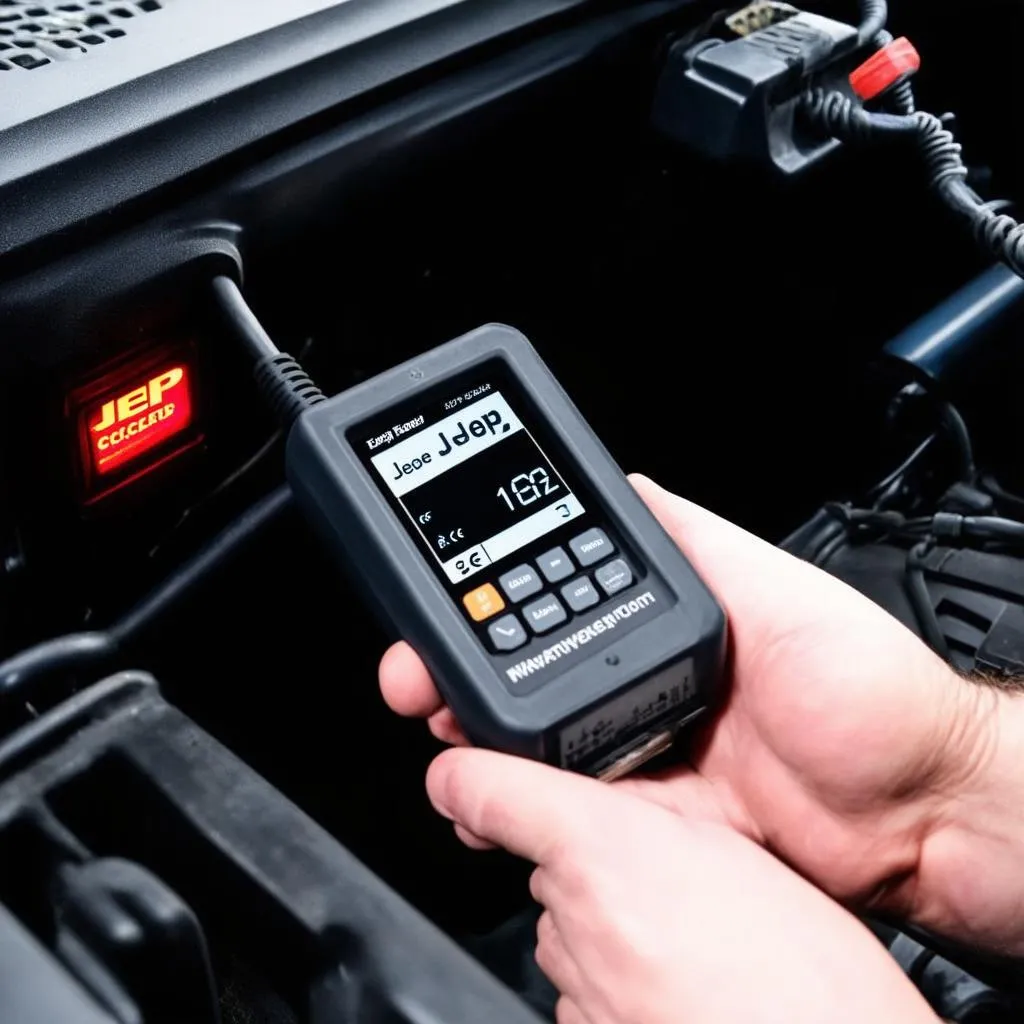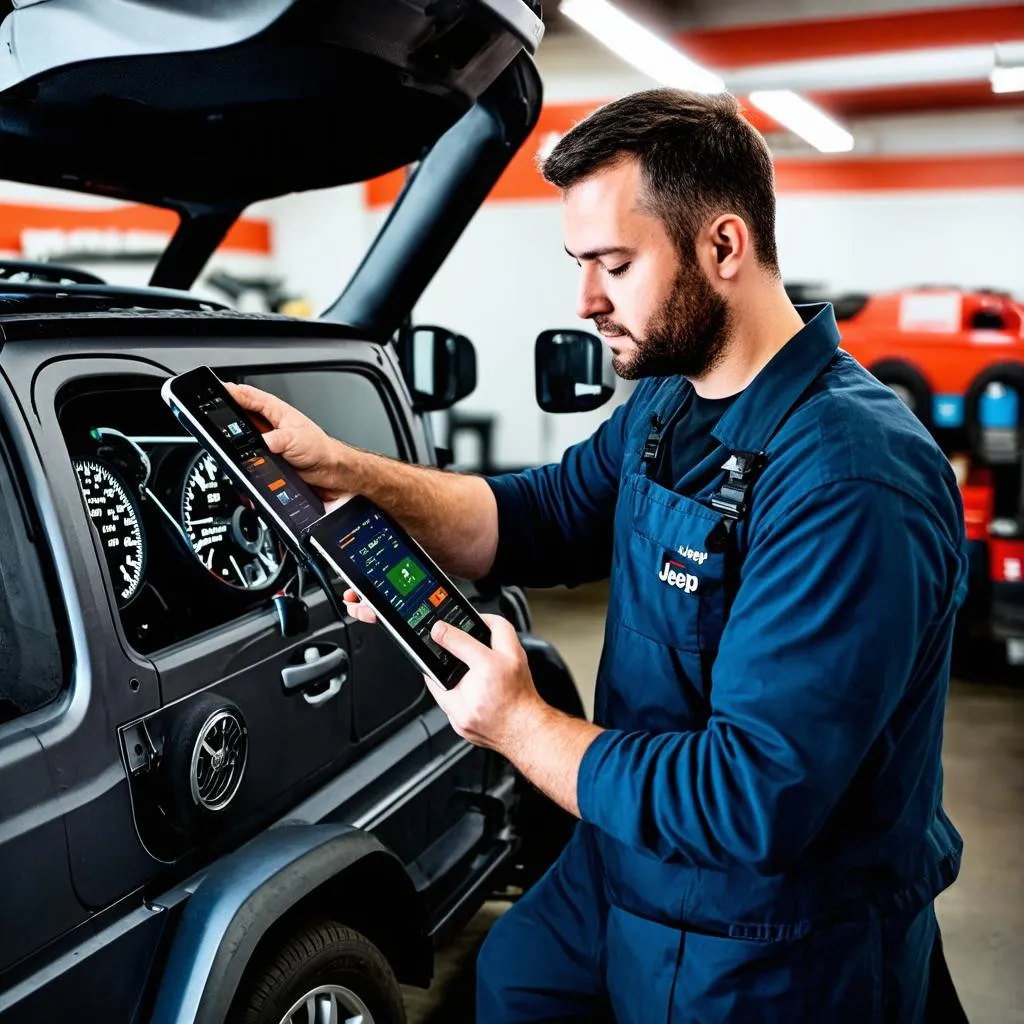“My check engine light is on again!” If you own a Jeep Wrangler, especially an older model, you’ve probably uttered this phrase with a mix of frustration and resignation. Like an ancient oracle, the check engine light often feels cryptic and ominous. But fear not, intrepid Jeeper! Those blinking lights are just your Wrangler’s way of communicating. And the language it speaks? OBD codes.
Decoding the Language of Your Jeep
OBD stands for On-Board Diagnostics, and those codes are standardized across most vehicles. Think of them as your Jeep’s internal error messages. When your Wrangler’s computer detects a problem, it logs a specific code, illuminating your check engine light. Now, unlike ancient oracles, interpreting these codes doesn’t require sacrificing a goat (thankfully!).
Why Your Jeep is Throwing Codes
There are literally hundreds of potential OBD codes, and your Jeep Wrangler might be prone to some more than others. Some common culprits include:
Emissions System:
- Loose gas cap: This is almost comical in its simplicity, but it happens more often than you’d think! A loose gas cap can trigger an evaporative emissions code (like P0442).
- Oxygen sensor issues: O2 sensors monitor the exhaust gasses to ensure optimal fuel combustion. A faulty sensor can cause decreased fuel economy and trigger codes like P0135.
Engine Performance:
- Misfires: These can be caused by faulty spark plugs, ignition coils, or even bad fuel. Codes like P0300 (random misfire) or P0301 (cylinder 1 misfire) are common indicators.
- Catalytic converter problems: This crucial component reduces harmful emissions, and a failing one can seriously affect performance. Look out for codes like P0420.
 OBD Scanner Connected to a Jeep Wrangler
OBD Scanner Connected to a Jeep Wrangler
What to Do When the Light Comes On
- Don’t Panic: Your Jeep isn’t going to spontaneously combust. However, it’s best to address the issue sooner rather than later.
- Read the Code: You’ll need an OBD-II scanner for this. You can find them at most auto parts stores or online.
- Do Your Research: Websites like techcarusa.com and forums dedicated to Jeep Wranglers are invaluable resources for understanding specific codes.
- Consult a Professional: While some fixes are DIY-friendly, more complex issues might require a trip to a trusted mechanic.
Beyond the Technical: A Touch of Jeep Karma
Some Jeep owners, especially those who take their Wranglers off-road, believe in a bit of “Jeep karma.” While a loose gas cap is likely just a loose gas cap, recurring electrical gremlins might be blamed on angering the “Trail Gods.” Whether you subscribe to this or not, preventative maintenance and regular checks are key to keeping your Wrangler happy, both mechanically and karmically.
Common Questions about Jeep Wrangler Obd Codes
- Can I drive with the check engine light on? It depends. If the light is flashing, it indicates a serious issue, and you should stop driving immediately. A steady light usually means a less urgent problem, but it’s still best to get it checked out ASAP.
- Will disconnecting the battery reset the codes? Temporarily, yes. But the light will return if the underlying issue isn’t addressed.
 Mechanic Diagnosing Jeep Wrangler Issues
Mechanic Diagnosing Jeep Wrangler Issues
Want to Learn More?
Check out these articles on techcarusa.com for more in-depth information:
Need Expert Help?
We’re here for you! Contact us on WhatsApp at +84767531508 for 24/7 support on diagnostic tools and car repair. Our team of expert mechanics is ready to help you get back on the road.
Remember, understanding your Jeep Wrangler’s OBD codes is like having a superpower. You can diagnose problems early, avoid costly repairs, and ensure your trusty Wrangler keeps on exploring for years to come!